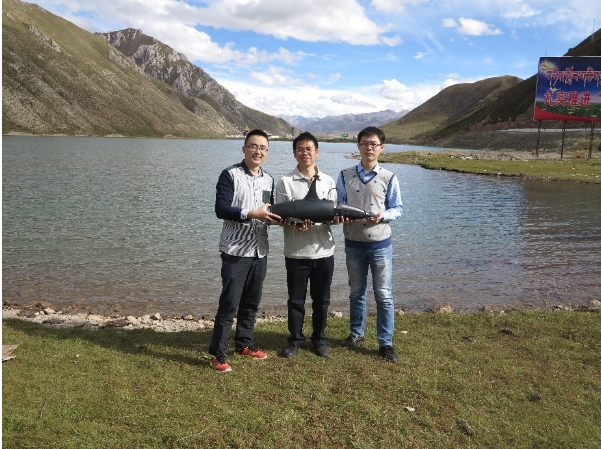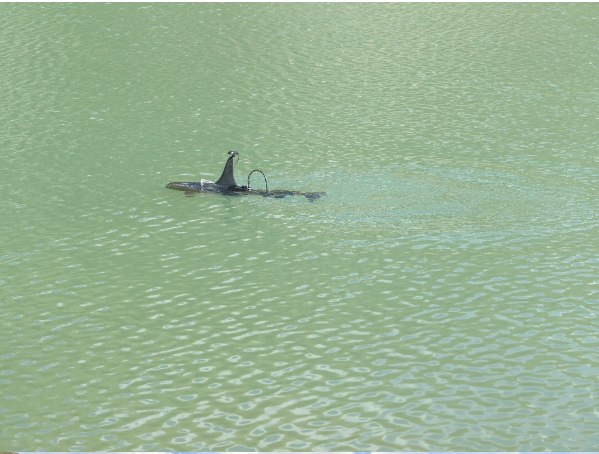As the Olympic Motto “faster, higher, stronger” goes, dolphins are generally recognized as gifted swimmers in nature with outstanding water sports capabilities, e.g. leaping up to several meters and then making a turn in the air swiftly. Inspired by dolphins in natural world, Professor YU Junzhi and his colleagues from Institute of Automation, Chinese Academy of Sciences (CASIA), have developed an elegant robotic dolphin to mimic dolphin leaps.

Researchers of CASIA & thier dolphin robot. (Image by CASIA)
This robotic dolphin, modeled after a spotted dolphin, is designed with particular emphasis on streamlining as well as a high thrust tail powered by electric motors. The main load-bearing parts of the skeleton are made of titanium and other parts are made of aluminum, copper, and nylon. As for electronics, the dolphin robot is equipped with a microcontroller with high computational performance, a variety of onboard sensors, and a wireless communication module.
Building the hardware was only part of the challenge. The other half was modeling and calculating the speeds and angles needed for recreating the dolphin's leap. To solve this problem, the research team proposed a novel angle of attack theory based on control method to maximize the pushing speed. Meanwhile, a synthesized attitude control scheme was formed through the hybrid propulsion capability of the posterior body and the complementary maneuverability of the flippers.

Dolphin robot swims in Qinhai Trangu Reservoir. (Image by CASIA)
Finally, dolphin robot was successful in swimming test in Qinhai Trangu Reservoir at the speed of 2.1 m/s, making it one of the fastest swimmers for its size ever built. Besides, the dolphins also realized several kinds of dolphin leaps, like one-shot leap and serial leaps.
Under the control of host system, the dolphin-like robots can be used to simulate agile movement, such as swimming straightly, yawing, floating and diving etc., which are hard to observe or measure. In addition, the acquired data of water quality parameters during their cruise, e.g. PH value, temperature, electric conductivity can be uploaded to the host system in real time.
According to Prof. YU, in next stage the research will focus on investigating the energy expenditure to examine the power-speed relationship of dolphin propulsion on the robotic platform. Besides, another ongoing endeavor is made to increase jumping distance and height by means of improving mechanical design and control approaches.
The research entitled Development of a Fast-Swimming Dolphin Robot Capable of Leaping has been published in IEEE/ASME Transaction on Mechatronics.
Contact:
Prof. YU Junzhi
Institute of Automation, Chinese Academy of Sciences, 95 Zhongguancun East Road, 100190, BEIJING, CHINA
Tel: 86-010-82544796
E-mail: junzhi.yu@ia.ac.cn
